MacBook Air
15 years of macbook air: the iconic steve jobs unveil, the troubled years, and the future.
The MacBook Air was announced by Steve Jobs 15 years ago today, on January 15, 2008. The event has become one of the most iconic Apple events ever, thanks in large part to the moment Jobs pulled the MacBook Air out of a manila envelope.
Beyond the event itself, however, the MacBook Air has also become of Apple’s most important and successful products – despite some speed bumps along the way…

The MacBook Air announcement
The MacBook Air was announced as part of Apple’s keynote at the Macworld Expo trade show. Alongside the MacBook Air, this Apple keynote also included the launch of the Time Capsule , updates to the iPhone and iPod touch, and much more. The MacBook Air, however, stole the show, and its introduction was Steve Jobs at his very best.
“We’ve built the world’s thinnest notebook—without sacrificing a full-size keyboard or a full-size 13-inch display,” said Steve Jobs, Apple’s CEO. “When you first see MacBook Air, it’s hard to believe it’s a high-performance notebook with a full-size keyboard and display. But it is.”
Here are the original specs of the entry-level MacBook Air announced by Steve Jobs, which became available to consumers January 29, 2008.
- 13.3-inch LED-backlit glossy widescreen display with 1280×800 resolution;
- 1.6 GHz Intel Core 2 Duo processor with 4MB L2 cache;
- 800 MHz front-side bus;
- 2GB of 667 MHz DDR2 SDRAM;
- 80GB hard disk drive with Sudden Motion Sensor;
- Intel Graphics Media Accelerator X3100;
- Micro-DVI port (includes Micro-DVI to VGA and Micro-DVI to DVI Adapters);
- built-in iSight video camera;
- built-in AirPort Extreme 802.11n wireless networking and Bluetooth 2.1+EDR;
- one USB 2.0 port;
- one headphone port;
- multi-touch TrackPad with support for advanced multi-touch gestures including tap, scroll, pinch, rotate and swipe; and
- 45 Watt MagSafe Power Adapter.
Those were relatively decent specs for the time, but the MacBook Air was clearly limited by its thin and light form factor. After all, it was the “world’s thinnest notebook” according to Jobs, measuring in at 0.16 inches at its thinnest point.
The MacBook Air was iconic for another reason, too: It was the first Mac that Apple offered with an optional 64GB solid-state drive… for an extra $1,300. As notable as it was for Apple to offer a MacBook with an SSD inside, the early MacBook Air reviews generally said that the benefits didn’t outweigh the cost.

In general, the first version of the MacBook Air recovered mixed reviews, with praise for the design, and criticism for the performance and battery life. Many reviews acknowledged, however, that the MacBook Air was the first step toward the future of the MacBook lineup. Here are some fun lines we’ve pulled from those first reviews:
Engadget’s Ryan Block :
- “It’s the thinnest, and if we may say so, sexiest laptop around today.”
- “The Air simply doesn’t have the power to be many users’ primary machine, while also lacking many of the features considered a necessity by business travelers.”
- “There simply isn’t any way to transparently replace all the functionality of an optical drive yet.”
- “Perhaps the largest side-effect of the Air won’t be ditching optical drives, though; for the rest of Apple’s consumer base it’s now just a matter of time before other Mac laptop lines benefit from the technical and engineering advances that made this thing so thin and light.”
Macworld’s Jason Snell :
- “As someone who uses the optical drive in his laptop so rarely that I sometimes forget whether its slot is on the front or the side, I don’t really consider the lack of an optical drive a major omission.”
- “The MacBook Air is the slowest Mac in Apple’s current product line, though its Intel Core 2 Duo processor is fast enough for general use.”
- “But once I slipped that three-pound laptop into my backpack and threw the bag over my shoulders, I realized that sacrificing some storage space and some processor power was ultimately worth it for me.”
Arstechnica’s Jackqui Cheng :
- “One way to look at the MacBook Air is as the largest and most capable iPod in Apple’s line—think of it as an iPod touch Extreme with a built-in keyboard.”
- “I found the Air’s size and weight to be nothing less than absolutely delightful.”
- “Despite all of the Air’s (sometimes glaring) flaws, I plan to keep it and use it as my notebook from here on out (maybe with a hard drive upgrade in the near future, and definitely with a battery upgrade when they become available).”
Other reviews:
- Pocket-lint
- NotebookCheck
The future of the MacBook Air
Following the initial introduction of the MacBook Air in January of 2008, it became a mainstay of Apple’s laptop lineup. It was updated with a number of spec and performance improvements just nine months later. It was redesigned with a tapered unibody enclosure a year later, which also marked the introduction of a new 11.6-inch form factor.
The MacBook Air received regular spec bumps through 2011, 2012, and 2013, but went without updates in 2014 and received a minor spec bump in 2015. Two years later in 2017, the 13-inch MacBook Air saw another performance boost, but the 11-inch model was discontinued.
9to5Mac’s Take
Apple clearly lost the vision for the MacBook Air somewhere around 2015, when it sat neglected as the company focused on the 12-inch MacBook instead. It saw scattered (and minor) performance improvements, no changes to the design, and was clearly on the way out the door.
That 2017 MacBook Air hung around in Apple’s lineup for a long time (perhaps too long). It wasn’t discontinued until July 2019, at which point it was the last laptop sold by Apple without a Retina display and with USB-A ports and a backlit Apple logo.
The 12-inch MacBook was the star of the show starting in 2015, and it wasn’t until 2018 that Apple realized it might have made the wrong decision. At that point, the MacBook Air had featured pretty much the same design for eight years. That’s a long time for what many viewed as Apple’s most popular laptop.
One thing I think Apple learned over the years is that the “MacBook Air” name holds a lot of power. The attempt to phase out the MacBook Air in favor of the 12-inch MacBook was a clear failure (it wasn’t the only failure for the MacBook lineup around that time).
But starting in 2018, Apple started to make changes. The 12-inch MacBook received its last major update in June of 2017 and Apple unveiled a major update for the MacBook Air just over a year later. This MacBook Air finally offered a Retina display, a new design that maintained the iconic thinness and lightness, and notable performance upgrades.
The 12-inch MacBook was unceremoniously discontinued on July 9, 2019. There are rumors it may return, but this time in addition to the MacBook Air – not as a replacement.
In 2020, the MacBook Air became the first Apple laptop to switch from Intel to Apple Silicon, alongside the 13-inch MacBook Pro. Apple Silicon has proven to be a game changer for the MacBook Air, allowing Apple to pack more power and efficiency into the machine than ever before.
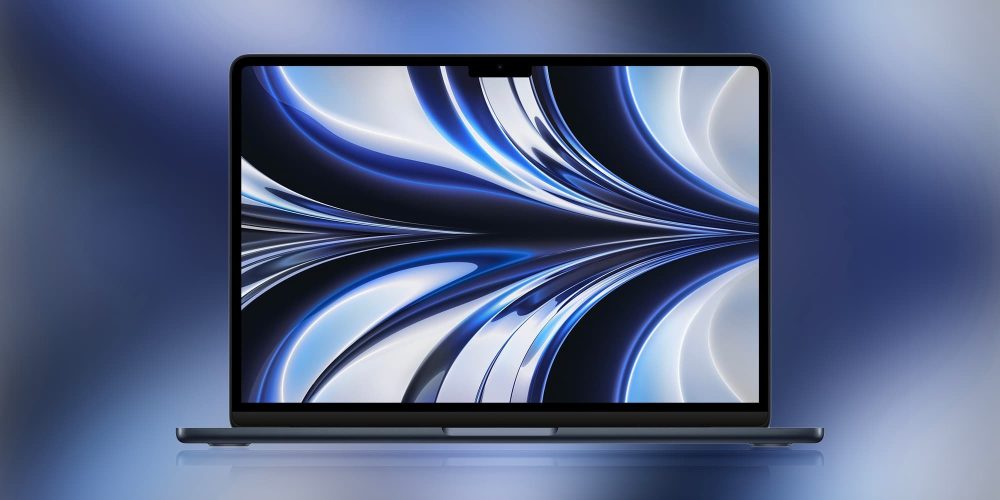
In 2022, the MacBook Air was redesigned to ditch the iconic tapered design in favor of a flat-edged unibody form factor. This redesign also saw the introduction of the M2 chip inside, for yet another boost in performance and efficiency, as well as the return of MagSafe for charging.
Looking ahead, the future of the MacBook Air is brighter than ever. Apple Silicon has proven that even a small and light computer like the MacBook Air can offer incredible performance and battery life, without compromise. There are rumors that Apple might even expand the MacBook Air lineup to include a new 15-inch model sometime in 2023 .
The MacBook Air has come a long way over the last 15 years, despite some neglect around the halfway mark. Hopefully, Apple learned its lesson and the MacBook Air will be a well-supported option in the Mac lineup for years to come.
Follow Chance : Twitter , Instagram , and Mastodon
FTC: We use income earning auto affiliate links. More.
Check out 9to5Mac on YouTube for more Apple news:

In 2008 Steve Jobs introduced the first ultra-th…
Chance is the editor-in-chief of 9to5Mac, overseeing the entire site’s operations. He also hosts the 9to5Mac Daily and 9to5Mac Happy Hour podcasts.
You can send tips, questions, and typos to [email protected].

Manage push notifications
Steve Jobs changed the future of laptops 10 years ago today
10 years of the macbook air.
By Tom Warren , a senior editor covering Microsoft, PC gaming, console, and tech. He founded WinRumors, a site dedicated to Microsoft news, before joining The Verge in 2012.
Share this story
If you buy something from a Verge link, Vox Media may earn a commission. See our ethics statement.
:format(webp)/cdn.vox-cdn.com/uploads/chorus_asset/file/10036361/79011090.jpg.jpg)
“It’s the world’s thinnest notebook,” said Steve Jobs as he introduced the MacBook Air 10 years ago today. Apple’s Macworld 2008 was a special one, taking place just days after the annual Consumer Electronics Show had ended and Bill Gates bid farewell to Microsoft . Jobs introduced the MacBook Air by removing it from a tiny paper office envelope, and the crowd was audibly shocked at just how small and thin it was. We’d never seen a laptop quite like it, and it immediately changed the future of laptops.
At the time, rivals had thin and light laptops on the market, but they were all around an inch thick, weighed 3 pounds, and had 8- or 11-inch displays. Most didn’t even have full-size keyboards, but Apple managed to create a MacBook Air with a wedge shape so that the thickest part was still thinner than the thinnest part of the Sony TZ Series — one of the thinnest laptops back in 2008. It was a remarkable feat of engineering, and it signaled a new era for laptops.
Apple’s original MacBook Air only had one USB port
Apple ditched the CD drive and a range of ports on the thin MacBook Air, and the company introduced a multi-touch trackpad and SSD storage. There was a single USB 2.0 port, alongside a micro-DVI port and a headphone jack. It was minimal, but the price was not. Apple’s base MacBook Air cost $1,799 at the time, an expensive laptop even by today’s standards.
It took Windows laptop makers years to catch up to the MacBook Air, all while Apple’s laptop kept winning praise from reviewers. It wasn’t until a few years ago that rivals even managed to surpass Apple’s laptop and introduce superior designs with better displays, specifications, and equivalent trackpads. Even today, Apple still sells the MacBook Air at a starting price of $999 with a design and display that now feels too dated against the modern competition.
Apple has so far refused to redesign the MacBook Air to compete against the Surface Laptop , Dell’s XPS 13, and other rivals. Apple introduced the 12-inch MacBook instead, but it hasn’t had the same impression on the industry as the MacBook Air. It’s still possible Apple might surprise us with a new MacBook Air, but given its position between the 12-inch MacBook and the 13-inch MacBook Pro options, it feels unlikely. The existing MacBook Air hasn’t been updated for nearly three years, and it certainly looks like it’s now living out its final days after being so influential for so many years.
The bill finally comes due for Elon Musk
The internet archive is under attack, with a breach revealing info for 31 million accounts, casio supersized a classic digital watch to create this retro desk clock, a closer look at nintendo’s adorable alarmo clock, instagram and threads moderation is out of control.
More from Tech
:format(webp)/cdn.vox-cdn.com/uploads/chorus_asset/file/25184511/111323_PlayStation_Portal_ADiBenedetto_0013.jpg)
Sony’s portable PlayStation Portal is back in stock
:format(webp)/cdn.vox-cdn.com/uploads/chorus_asset/file/23925998/acastro_STK054_03.jpg)
The Nintendo Switch 2 will now reportedly arrive in 2025 instead of 2024
:format(webp)/cdn.vox-cdn.com/uploads/chorus_asset/file/19336098/cwelch_191031_3763_0002.jpg)
The best Presidents Day deals you can already get
:format(webp)/cdn.vox-cdn.com/uploads/chorus_asset/file/25289959/Command_Line_Site_Post_Dylan_Field_Figma.jpg)
Interview: Figma’s CEO on life after the company’s failed sale to Adobe
Complete Transcript of Steve Jobs, Macworld Conference and Expo, January 9, 2007
Complete transcript of steve jobs, macworld conference and expo, january 9, 2007 lyrics.
How to Format Lyrics:
- Type out all lyrics, even repeating song parts like the chorus
- Lyrics should be broken down into individual lines
- Use section headers above different song parts like [Verse], [Chorus], etc.
- Use italics ( <i>lyric</i> ) and bold ( <b>lyric</b> ) to distinguish between different vocalists in the same song part
- If you don’t understand a lyric, use [?]
To learn more, check out our transcription guide or visit our transcribers forum

via iPhonebuzz.com
Find answers to frequently asked questions about the song and explore its deeper meaning
Genius is the world’s biggest collection of song lyrics and musical knowledge
- Nolan Haims Creative

10 Years Ago Today Apple Took Something Out of an Envelope
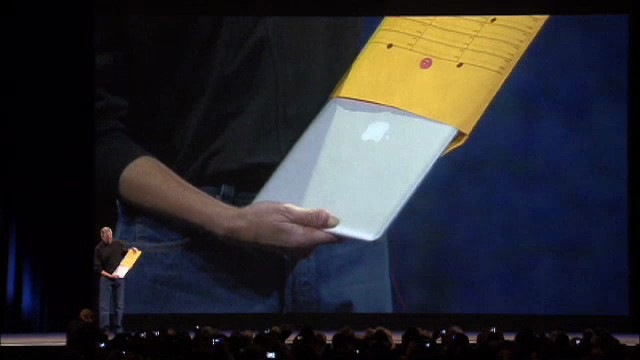
10 years ago today, Steve Jobs introduced the Macbook Air—still maybe the best laptop ever and definitely one of the best uses of props in a presentation ever.
Watch it all below.
- [email protected]
- 917.405.7380
- a. Send us an email
- b. Anonymous form
- Buyer's Guide
- Upcoming Products
- Tips / Contact Us
- Podcast Instagram Facebook Twitter Mastodon YouTube Notifications RSS Newsletter
Steve Jobs Introduced the MacBook Air Exactly 10 Years Ago Today
Today marks the tenth anniversary of the late Steve Jobs unveiling the MacBook Air, the world's thinnest notebook at the time.
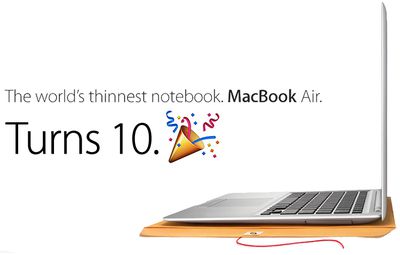
The thinness came at a cost. The base model ran $1,799 for a 1.6GHz Intel Core 2 Duo processor, 2GB of RAM, and an 80GB hard drive. A maxed out version was also available for $3,098, around $300 more than the base Mac Pro at the time, with a faster 1.8GHz processor and a 64GB solid-state drive.
A single design decision also epitomized the past decade of Apple: a flip-down door on the right side of the machine provided access to only a single USB port, a headphone jack, and a micro-DVI port.
We've seen Apple go down this path many times since: it introduced the MacBook with just a single USB-C port, reduced the MacBook Pro's connectivity to Thunderbolt 3 ports, and removed the headphone jack on the iPhone 7. Each change generated controversy, but ultimately set the course for its future.
Stephen Hackett of 512 Pixels has shared a great piece titled The MacBook Air: A Decade's Worth of Legacy over at MacStories that dives into the notebook's history. He also put together the video below.
Get weekly top MacRumors stories in your inbox.
Popular Stories
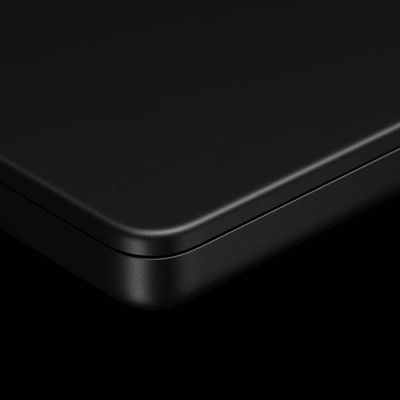
Apple Potentially Facing Worst Leak Since iPhone 4 Was Left in a Bar
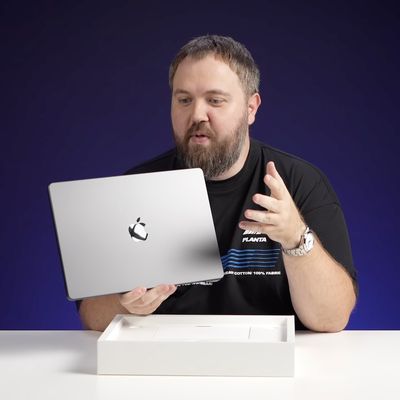
Alleged M4 MacBook Pro Unboxing Video Reveals These Four Upgrades
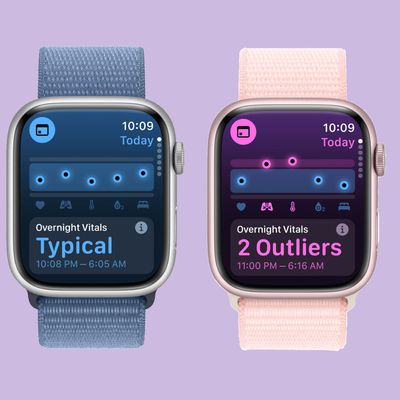
Apple Watch Users Report Vitals App Detecting Illness Before Symptoms Appear
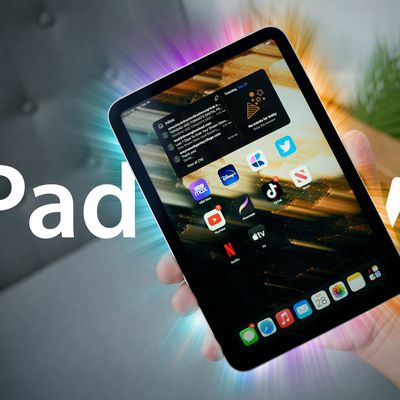
iPad Mini 7 Coming Next Month: What to Expect

10 Reasons to Wait for Next Year's iPhone 17
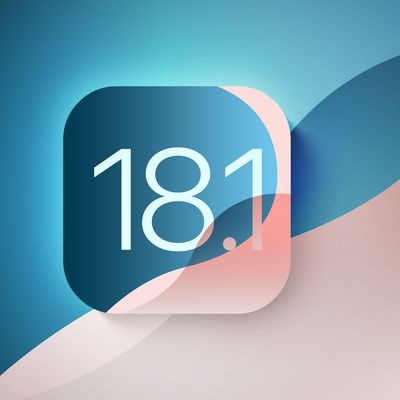
Everything New in iOS 18.1 Beta 6
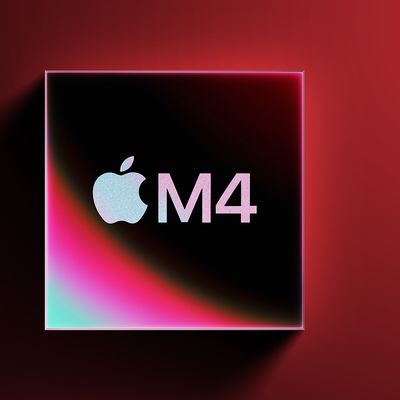
Gurman: Apple to Launch First M4 Macs and Potentially iPad Mini 7 on November 1

Waiting for a New Apple TV? Here's What the Latest Rumors Say
Top rated comments.
Apple should really refresh the Air.
Next Article

Our comprehensive guide highlighting every major new addition in iOS 18, plus how-tos that walk you through using the new features.

Just Got an iPhone 16? Here's how to use all the new features and hardware capabilities.
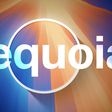
All the new features and lesser-known changes that are worth checking out if you're upgrading.
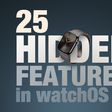
Updates and enhancements in the latest Apple Watch software that may have gone under your radar.
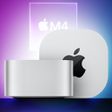
Completely redesigned with Apple TV-sized form factor, M4 and M4 Pro chip options, and more.
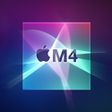
Next-generation M4, M4 Pro, and M4 Max chips optimized for AI capabilities.
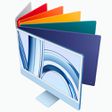
Spec bumps including an upgrade to Apple's new M4 chip.
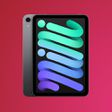
Chip and camera upgrades expected, plus a possible fix for "jelly scrolling" display issues from the current model.
Other Stories
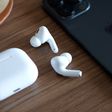
6 hours ago by Tim Hardwick

1 day ago by Joe Rossignol

IMAGES
VIDEO
COMMENTS
Here we see Steve Jobs introducing the MacBook Air ultra-portable laptop.
Steve Jobs introduces the MacBook Air at MacWorld 2008.
Watch Apple CEO Steve Jobs kick off the Macworld Conference & Expo 2008 with a keynote address that covers exciting developments at Apple, including the MacBook Air and the addition of...
Steve Jobs Macworld MacBook Air. Robert Andrews. 138 subscribers. Subscribed. 285. 186K views 16 years ago. Laptop...more.
The MacBook Air was announced by Steve Jobs 15 years ago today, on January 15, 2008. The event has become one of the most iconic Apple events ever, thanks in large part to the moment Jobs pulled...
Jobs introduced the MacBook Air by removing it from a tiny paper office envelope, and the crowd was audibly shocked at just how small and thin it was.
Complete Transcript of Steve Jobs, Macworld Conference and Expo, January 9, 2007 Lyrics. Thank you for coming. We’re going to make some history together today. So, welcome to Macworld. You know...
10 years ago today, Steve Jobs introduced the Macbook Air—still maybe the best laptop ever and definitely one of the best uses of props in a presentation ever. Watch it all below.
Every Steve Jobs presentation builds up to one big scene. In this year's Macworld keynote, it was the announcement of MacBook Air. To demonstrate just how thin it is, Jobs said it would fit in an envelope. Jobs drew cheers by opening a manila interoffice envelope and holding the laptop for everyone to see. What is the one memorable moment of your
After introducing the AirPort Time Capsule and sharing some iPhone and Apple TV news, Jobs walked over to his podium, grabbed a manilla envelope, and pulled out the sleek MacBook Air.